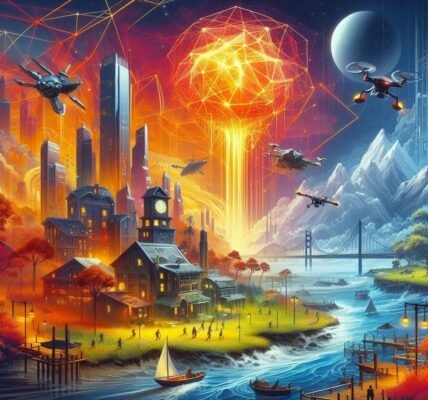Action games, a genre defined by fast-paced gameplay, combat, and often heart-pounding moments, have captivated audiences for decades. These games offer a wide variety of experiences that range from gritty, grounded realism to imaginative and fantastical settings. The balance between realism and fantasy in action games shapes not only the visual style and mechanics of a game but also the way players connect with the world, characters, and challenges they encounter.
This article will explore the spectrum of action games, examining how realism and fantasy influence game design, storytelling, and player immersion. By understanding this spectrum, we can appreciate the diverse experiences that action games offer and why players may gravitate toward one end or the other—or enjoy the entire range in between.

The Realism Side of the Spectrum
The Appeal of Realism in Action Games
Realism in action games aims to immerse players in a world that closely mirrors our own, whether it’s through authentic environments, lifelike physics, or complex character behavior. For many players, this level of realism enhances the immersion factor, making them feel like they are truly part of the world in which they’re playing. Realism can also make games more relatable, as players encounter scenarios and challenges that feel grounded in the real world.
Games that lean heavily into realism often prioritize historical accuracy, authentic military combat, or gritty, down-to-earth storytelling. The appeal lies in the tension created by a world that feels tangible, where every action and decision carries weight.
Examples of Realistic Action Games
1. Call of Duty Series One of the most famous examples of realism in action gaming, the Call of Duty series has long been known for its portrayal of modern military warfare. While the series has incorporated elements of science fiction in certain titles, its core identity is rooted in real-world combat scenarios. From the sound of gunfire to the tactics used in missions, the game strives to deliver an authentic military experience. The focus on historical conflicts, such as World War II and the Cold War, provides players with an experience that feels intense, grounded, and authentic.
2. Red Dead Redemption 2 Another shining example of realism in action games is Red Dead Redemption 2, a game that goes to great lengths to recreate the experience of living in the American West during the late 19th century. From the painstakingly detailed environments to the lifelike AI behavior, everything in Red Dead Redemption 2 feels authentic. Players must account for survival mechanics like hunger and stamina, and even the way characters interact with the world—whether it’s skinning animals or engaging in tense gunfights—feels deeply realistic. This attention to detail draws players into a fully realized world that mirrors the harsh realities of the frontier.
The Challenges of Realism in Game Design
Creating a realistic action game comes with significant challenges. Developers must ensure that the game mechanics, physics, and AI behavior all function in ways that feel authentic, which can be incredibly resource-intensive. Furthermore, realism can sometimes limit the creative freedom that developers have, as they are bound by the constraints of the real world.
Realism also poses a potential challenge in maintaining balance between immersion and fun. For example, while a game may strive for authenticity, adding too many realistic elements—like complicated weapon systems or slow movement—can detract from the fast-paced, engaging nature that action games are known for. Developers must strike a balance between delivering realism and ensuring the gameplay remains accessible and enjoyable.
The Fantasy Side of the Spectrum
The Appeal of Fantasy in Action Games
At the other end of the spectrum lies fantasy, where action games break free from the constraints of reality to offer players imaginative, otherworldly experiences. Fantasy allows for limitless creativity, with game worlds that can feature magic, mythical creatures, futuristic technology, and physics that defy reality. These games provide players with a sense of escapism, taking them far from the familiar and into realms of imagination where anything is possible.
For many, fantasy action games offer a break from reality. They invite players to embrace the impossible, wield incredible powers, and face enemies that could never exist in the real world. The fun comes from the freedom to explore unknown worlds, engage in epic battles, and experience stories that push the boundaries of what we think is possible.
Examples of Fantasy Action Games
1. The Legend of Zelda Series One of the most iconic action-adventure series in gaming, The Legend of Zelda exemplifies fantasy in action games. Players step into the role of Link, a hero who travels through enchanted forests, mysterious dungeons, and sprawling kingdoms, battling fantastical creatures and solving puzzles. The games are known for their blend of swordplay, magic, and exploration, with a narrative steeped in myth and legend. The fantasy elements are key to the game’s charm, offering a unique blend of combat and exploration in a world that could never exist in reality.
2. Devil May Cry Series The Devil May Cry series is another example of a game that embraces fantasy to its fullest extent. The protagonist, Dante, wields both guns and swords, battling hordes of demons in a fast-paced, combo-heavy combat system. The series is known for its over-the-top action, with Dante performing acrobatic feats and supernatural moves that defy the laws of physics. Devil May Cry leans heavily into fantasy, with its demonic enemies, surreal environments, and magical powers, offering players a high-energy experience that is far removed from the real world.
The Creative Freedom of Fantasy
Fantasy games offer developers unparalleled creative freedom. They are not bound by the rules of reality, allowing for unique worlds, characters, and combat systems. Magic, for example, is a common element in fantasy action games, giving players the ability to cast spells, summon creatures, or manipulate time and space. This freedom enables developers to craft experiences that are entirely unique, unshackled by the limitations of the real world.
Fantasy action games also allow for storytelling that can explore themes and ideas in ways that realism cannot. Mythical creatures, ancient prophecies, and epic quests can serve as metaphors for real-world issues, or simply provide players with an escape into a world of adventure and wonder.
Blending Realism and Fantasy
While some action games fall squarely on one side of the spectrum, many successfully blend elements of both realism and fantasy. These hybrid games use a realistic framework but incorporate fantastical elements to create a more dynamic and engaging experience.
Examples of Hybrid Games
1. The Witcher Series The Witcher is a perfect example of a game that blends realism with fantasy. Set in a gritty, medieval world, the game features human politics, moral ambiguity, and realistic combat, but it also includes magic, monsters, and ancient prophecies. The game strikes a balance between its realistic depiction of a harsh world and its embrace of fantastical elements, creating a rich, immersive experience that feels grounded yet magical.
2. Assassin’s Creed Series The Assassin’s Creed series also blends realism and fantasy. On one hand, the games are set in meticulously recreated historical settings, from ancient Egypt to Renaissance Italy. On the other hand, they include fantastical elements, such as advanced technology and the mysterious “Pieces of Eden,” which grant users supernatural powers. The series uses a framework of historical realism to ground its narrative, while the inclusion of these fantastical elements allows for more creative gameplay and storytelling.
Conclusion
The spectrum of action games, from realism to fantasy, offers players a wide range of experiences. Realistic action games immerse players in worlds that mirror our own, offering gritty, grounded experiences where every action feels weighty and authentic. Fantasy action games, on the other hand, allow players to break free from reality, embracing the impossible and exploring imaginative worlds filled with magic and wonder. Hybrid games, which blend both realism and fantasy, offer the best of both worlds, creating dynamic and engaging experiences.
As the gaming industry continues to evolve, the line between realism and fantasy will likely continue to blur, offering players even more diverse experiences. Whether players prefer the grounded intensity of realism or the boundless creativity of fantasy, the action genre will continue to push the boundaries of both ends of the spectrum, delivering unforgettable adventures for all types of gamers.



